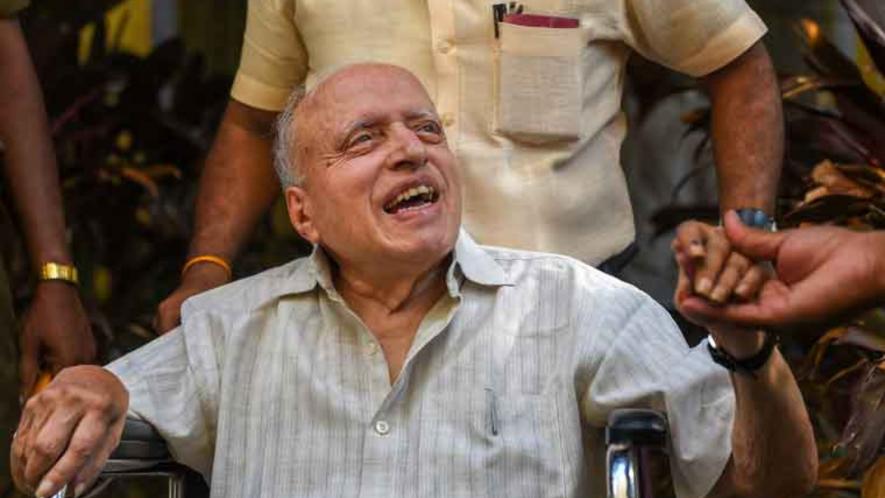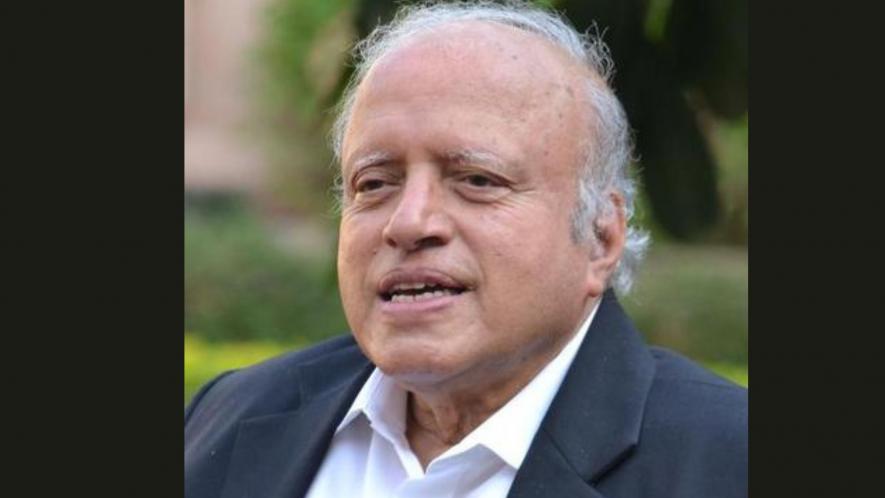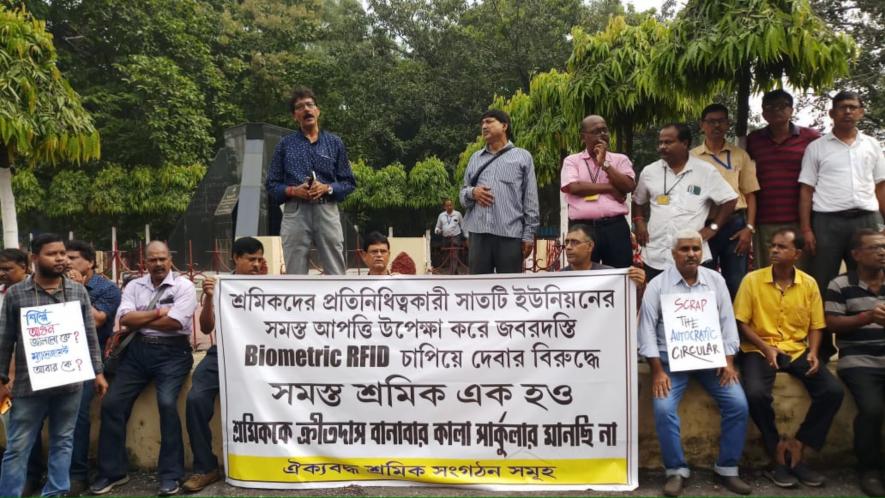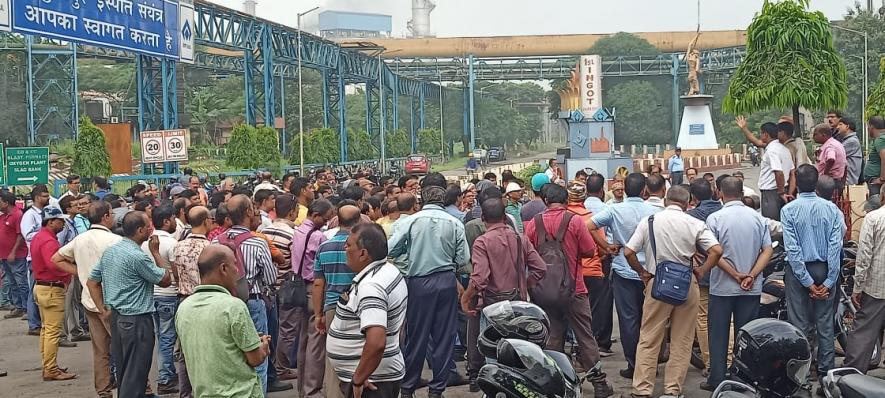INDIA
Forest Act Amendment: Sacrificing Forests on Altar of Corporate Interests?

Representational Image. Image Courtesy: Pxfuel
The Modi government, ever solicitous of corporate interests, has launched a plan whereby real estate developers and other corporates will be allowed to destroy large swathes of India’s forest cover for starting projects that rake in profits. It is amending the Forest Conservation Act to remove those forest patches that are not deemed as such by the government from protection under the Act.
It may be recalled that in 1996, the Supreme Court had given an order according to which every patch of forest, no matter who owned it, had to be protected, irrespective of whether the government’s records recognised that patch as a forest. This was in response to the fact that the government’s records were woefully incomplete and its definition of what constitutes a forest was utterly vague and non-uniform across states. The court had also asked that expert committees be formed in every state to identify all forest patches within the state that were not recognised to be so in official records and to accord them official recognition so that they could then be protected under the law.
Even by 2014 however, that is a full eighteen years after the Supreme Court order, according to information accessed by a journalists’ group, many state governments including Haryana, Bihar, Gujarat and Maharashtra, had not taken any steps to identify forest patches and incorporate them into the government’s records. This fact has provided a handle to the central government to amend the law itself and withdraw all protection from forests that government records do not recognise as such.
This clearly is a violation of the essence of the Supreme Court order. Instead of asking states to comply speedily with the court order so that there can be proper protection of all forests, or even setting up an expert committee of its own to report on the magnitude of unrecorded forest patches within the non-reporting states, the latter’s non-compliance has been used as an excuse to abrogate the thrust of the court order.
The Union Environment Minister Bhupendra Yadav has defended the amendment to the Forest Conservation Act on the ground that there was a fear that private plantations would get included under the definition of forests, which would deny plantation owners the freedom to use their land for other purposes if they so desired, and that this fear prevented the growth of private plantations and hence of green cover. It is to remove this fear and extend the green cover that the government was amending the Act!
This clearly is an utterly specious argument for at least two reasons: first, it adduces a reason for the lack of growth of plantations, namely a fear in the minds of potential plantation owners, for which there is no independent and empirically-based evidence; and second, a problem whose resolution would have required at best only a more precise set of definitions for distinguishing between forests and plantations, has been used to scuttle an entire law, for which there was no need whatsoever. Clearly the government’s intent was different: it was not the protection of the entire forest area of the country but the opening up of large chunks of it for commercial use.
The environmental damage that such opening up would cause, is immense. The government of course has not revealed to the public what exactly is the coverage of forests according to the official records, because of which it becomes difficult to estimate how much of forested area would now be thrown open for commercial use, but knowledgeable sources are apprehensive that it would be quite substantial. For instance, the forests covering the Aravali range that fall within Haryana are not recorded officially as forests, and they would become open for commercial purposes; their proximity to the capital would make them an attractive location for commercial projects which would take away much-needed greenery from the national capital region.
But quite apart from the environmental damage that such commercial exploitation of forest land would cause, there is also the question of the livelihood of the forest-dependent population. Many people depend upon the collection of minor forest produce for eking out a living; the destruction of forests implies for them a destruction of their present livelihoods with no alternative source of livelihood being provided by the government. It would become a powerful cause of destitution for them; they would become victims of a process of what Marx had called the primitive accumulation of capital. Not surprisingly, many organisations representing dalit and tribal groups have voiced strong opposition to the Modi government’s amendment of the Forest Conservation Act.
But the specific case of forest lands being thrown open for commercial use, is part of, and highlights, a broader issue, namely the need for socialisation of land-use in a country like ours. Land is not just a scarce resource; it is a resource whose supply is not easily augmentable over time. How land is used therefore becomes quite crucial for determining what happens to employment, food security and other such social objectives. Since the pattern of land-use is so important for the achievement of social objectives, this pattern cannot simply be left to the market. Even if land is not socially owned, land-use must be socially determined, which after all was the logic behind the Kerala government’s legislation controlling the diversion of paddy land for other purposes.
What this means is that even if the prospective buyer and the seller of a piece of land are agreed on a certain transaction involving land-sale, that sale should be allowed only if the use to which that land would be put after the transaction, if different from its current use, is socially approved. The Supreme Court order in 1996, totally prohibiting the diversion of forest land for other purposes, no matter who owns it, can be seen as a specific instance of the application of this general principle. That specific instance is one where there would be immediate and general agreement for curtailing the operation of the free market; but the need for curtailing the operation of the market is much wider and follows from the simple principle that the safeguarding of private interests is not necessarily conducive to the protection of the interests of society at large.
In fact, in the case of land-use, and in the context of contemporary India, the protection of private interest and the protection of social interest would be generally opposed to one another. This is because the pull in the market would be for the diversion of land from uses catering to the needs of the many belonging to the working poor, to real estates and golf courses which cater to the needs of a few.
The precise mechanism that can be erected in a society like ours for ensuring the social determination of land-use, need not detain us here. An obvious mechanism would be if a State-owned corporation has the first right of purchase over any land that comes to the market; it can then sell the land to a buyer who would use it only for “approved” purposes; or, alternatively, it can permit a sale only if it is for use for “approved purposes”, with any transgression rendering the transgressor open to penalty.
The Modi government’s entire thrust however is in the opposite direction, to alter the pattern of land-use in the direction dictated by the market. This is what primitive accumulation of capital entails: it does not only mean a concentration of ownership, from scattered petty ownership by many, or from communal ownership, to large-scale private ownership by a few; this change in ownership is typically also accompanied by a change in the purpose for which the land is used, a change from production largely for use (on the part of the petty owners) to full-blown commodity production (on the part of those to whose hands land has passed).
The three infamous farm laws were meant to achieve a similar end, viz. to shift land-use away from producing foodgrains for own consumption, or for national consumption via sales to the Food Corporation of India, towards producing cash crops for the metropolis. Now, the amendment to the Forest Conservation Act seeks to do the same: shift land-use from forests towards real estate or other commodities demanded by the metropolis or by the domestic rich, while excluding the forest-dependent population from the produce that sustains them.
Odisha: Dongria Kondh Tribals Take on Corporate Goliaths to Save Forests
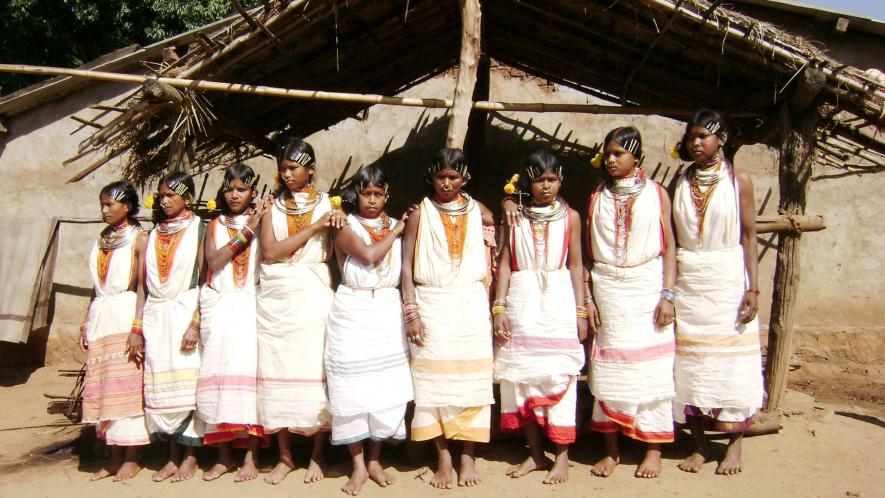
Dongria Kondh, a tribe that lives in the dense forests of Niyamgiri Hills, is spread across Rayagada and Kalahandi districts of southwestern Odisha. Image Courtesy: Wikimedia Commons
For the Dongria Kondh tribals, the Niyamgiri Hill in Odisha is the seat of their god Niyam Raja. Dongria Kondh means ‘protector of the streams’ and this is what they have cared for and nurtured in the past 2,000 years.
Every year, members of this tribal community go up to the Niyamgiri Hills and the Sijimali hills spread across the districts of Rayagada and Kalahandi districts, where they pray to Niyam Raja who they believe is a protector of nature and of the forests that grow on these hills.
The Forest Conservation Act 1980 was amended two months ago with the specific intention of depriving India’s tribal communities, whose population is estimated to be around 12 crore, of access to the forests in which they have been residing since millennia. By diluting the term ‘forest’ to exclude deemed forests, no gram sabha consent will be required to commence mining and other `development’ activities in these Scheduled Areas.
A fall-out of this amendment has been that the Narendra Modi government has leased areas in the Sijimali Hills to multinational mining major Vedanta. No attempt has been made to take the religious and environmental concerns of the tribals into consideration. As a result, the community was completely taken aback to see the staff of the Mythri Infotech Company, a sub lessee of Vedanta, felling trees in the Sijimali Hills.
The affected area in Niyamgiri covers 112 villagers with a population of over 1.5 lakh villages. Sijamali has a population of over 50,000 people, while Kuturmali covers 80 villages with a population of over 80,000 people.
While one team from the Mythri Infotech Company began tree felling in early August 2023, a second team began conducting a detailed survey of the hills. As per reports, angry villagers immediately surrounded the company staff and stopped them from felling the trees.
Madhusudan Sethi, a Delhi-based activist with Muiniwasi Samajseval Sangh (MSS), who supports the tribal movement, said: “The police, invoking the UAPA (Unlawful Activities Prevention Act), have unleashed a reign of terror. On August 5, two youth leaders, Drenju and Krushna, who were helping organise the World Adivasi Day on August 9, were arrested.”
He said, “These boys were part of the civil rights group Niyamgiri Suraksha Samiti.” Laxman is a local activist with MSS who works on the ground at Niyamgiri.
On August 6, the Odisha police filed an FIR (First Information Report) against nine activists, including Lingaraj Azad and Upendra Bhoi, “who were not even present. They have been accused of attempting to kill the cops, whereas it is well known that on all cultural events, the Dongria Kondh men carry an axe,” Sethi told this writer.
FIRs have been lodged against the tribals here on August 5, 6, 8,12 and 13 with over 150 tribals
presently lodged in jail. An MSS team visited this region to interact with the tribals of the Rayagada and Kalahandi districts. Sethi, who was part of this team, said he was “horrified at the ill treatment” being meted out to the tribals by the Odisha police.
“It seems as though the cops are acting as henchmen of these corporate houses. The entire place has been cordoned off. Every 500 yards, the police have put up pickets and the tribals are not being allowed to move about. They are not even being given access to drinking water even though the local administration knows that they depend on streams and the Vamshadhara river for their drinking and irrigation needs. This is all the more shocking because last year over 100 tribals died of cholera after drinking infected water,” said Sethi.
Laxman, a Niyamgiri Bachao Samiti local acitvist, said, “It is obvious both the BJP (Bharatiya Janata Party at the Centre) and the BJD (Biju Janata Dal) led by Chief Minister Naveen Patnaik are willing to go all out to help Anil Aggarwal (Vedanta owner) and other corporates. For them, the sufferings and the displacement of lakhs of people is of little consequence. But for us, Niyam Raja and the Niyamgiri Hill is the centre of our lives and our existence. How can we allow it to be destroyed before our lives?’
The Dongria Kondh tribals are amongst the poorest in India. Their fighting spirit and courage make up for their small numbers. Over a decade ago, they had fought against the Vedanta group who had wanted to extract $2 billion worth of bauxite that lies under the surface of the Niyamgiri Hills.
The mining major wanted to create an open cast mine that would have destroyed the hills and polluted the rivers. The Supreme Court denied them permission to mine the bauxite as this would have destroyed the hill, but the Vedanta Group was given permission to build a refinery in the town of Lanjigarh on condition that they would not destroy the forests. This did not happen on the ground, where 60 hectare areas of forest land were taken over by the group. This also saw the displacement of over 100 tribal families who were living in Kinari village.
The refinery is throwing toxic slurry into the surrounding streams and this waste has also made its way to the Vamsadhara river, say local activists. The permission to start mining the bauxite will further destroy this evergreen forest and also the many streams that supply water to this entire region, they fear.
Senior advocate Colin Gonsalves, who is planning to file a petition asking the government to repeal these amendments in the Act, told this writer, “How does it profit a nation to pollute its air, dirty its rivers, cut the trees and destroy its forests and good agricultural land for a small increase in GDP given that what is destroyed is lost forever?”
He said, “the villagers believe these amendments were brought in because the government was given Rs 74,000 crore for these mining rights. This money will help them in the upcoming Lok Sabha election,”
The Forest Conservation Amendment Act 2023 and the Forest Conservation Rules 2022 have opened the floodgates for massive deforestation.
Gonsalves points out, “The most exploitative aspect of these new rules, is that the Central government is now allowed to enter into a direct contract with the developer for this forest exploitation. The monies are handed over to the Centre and it is left to the state government to settle payments that are due to the individual tribal or the gram sabha, in settlement of the community forest lands which also the developer has now been given access to. This will be a fait accompli for the Centre, with the tribals being left with no compensation.”
Activists warn that the Central government is also working on repealing the Forest Rights Act and the Panchayat Extension into Schedule Areas Act, which makes the Gram Sabha supreme. Already the Forest Rights Act case is pending before the Supreme Court, with the Central government having informed the highest court that 80% of the claims of tribals to plots of land have been found to be false and have been rejected.
Advocate Gonsalves said, “A perusal of those rejection orders show that they are just one-liners that give no reasons whatsoever as to why these claims have been rejected.”
Tribal communities fear that an amendment of the Forest Rights Act would finish off their rights over traditional forests, as this will allow easy transfer of their land to prominent industrial and corporate houses.
The Niyamgiri Suraksha Samiti and the MSS are demanding the immediate recognition of Community Forest Rights and Individual Forest Rights of tribals to their forests, as mandated under the Forest Right Act 2006.
They are also demanding that Gram Sabha consent and a public hearing is a must so that the views of villagers be ascertained before a mining project be permitted in scheduled areas.
They also want the police to publish the names of grassroot activists who have been abducted by plainclothes policemen as also ensure their immediate release. Several of them are being tortured and have not been produced before a magistrate within the 24 hours period, as mandated by law, they alleged.
This is an unequal battle given Modi’s track record of riding roughshod over the aspirations and rights of indigenous communities. The last forest reserves of the Eastern Ghat seem set to face the axe unless state and money power relent and understand the rights of a community whose lives are deeply interwoven with their environment.
The writer is a senior independent journalist. The views expressed are personal.
Madhya Pradesh Tribals pay Price for Defending Forest Rights
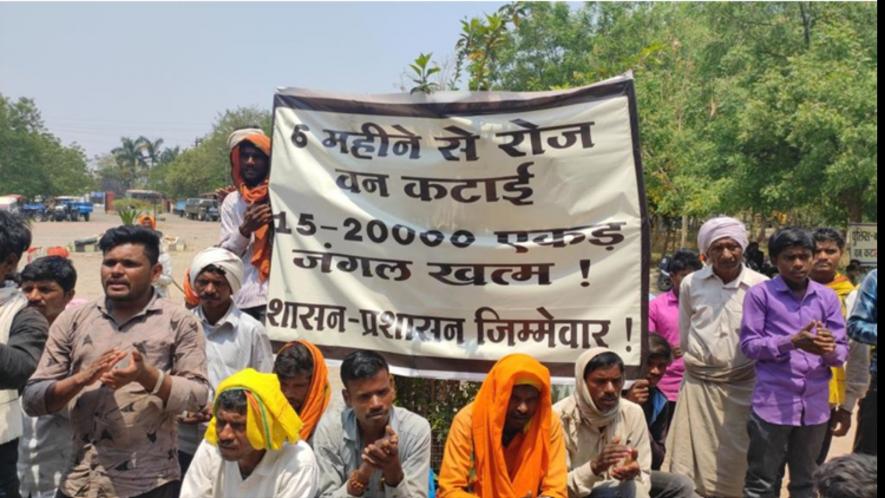
Tribals protest illegal deforestation in Madhya Pradesh’s Burhanpur district.
Bhopal: The Jagrit Adivasi Dalit Sangathan (JADS), a tribal rights organisation working in Madhya Pradesh’s(MP) southern districts for over a decade to create awareness for forest and tribal rights, is on the radar of agencies after protesting the illegal deforestation of an estimated 15,000 acres of pristine forests in the Burhanpur district.
On August 29, JADS activist Nitin Varghese (28) was arrested, a month after the Burhanpur administration banished key JADS leader Madhuri Krishnaswamy from the district for allegedly provoking tribals to encroach forest and instrumented the recent deforestation.
Varghese, a Tata Institute of Social Sciences [TISS] graduate, has worked with tribals for the past five years and recently developed lupus. After his only sister succumbed to this rare disease, he has been taking immunomodulatory drugs to remain healthy.
Varghese was accused of inciting tribals under Section 120B of the IPC to attack the forest ranger office on March 2after forest personnel detained four tribals, including two women, for encroaching forest land.
In a crackdown on JADS, the forest department lodged 21 preliminary offence reports and the police registered two FIRs against its members for protesting the illegal felling of trees and opposing eviction from disputed lands wherein the claims on pattas are subjudice. Besides, a dozen tribals associated with JADS were arrested. The organisation alleged that they were implicated infalse cases.
“Since he was a co-accused in one FIR in which forest officials were attacked in March, the police arrested him,”Burhanpur superintendent of police Devendra Patidar, who recently took charge from Rahul Lodha, told Newsclick.When asked about Varghese’s health complications, he said, “We are taking precautions.”
Varghese’s arrest and Krishnaswamy’sbanishment camethree to four months before the Assembly election, in which JADS plays an important role in mobilising tribal voters of the region.
JADS activist Ashabai Solanki alleged that the organisation has been subject to “malicious prosecution by the forest department and the government” for creating awareness about the Forest Rights Act (FRA),2006, “which helped tribals to improve their political understanding”.
Varghese’s arrest has irked senior Congress leaderand themember of Parliament from the region, Arun Yadav, and tribal leader and Congress national secretary Umang Singhar.
“Is it the government reward for opposing the illegal deforestation of teakwood in Nepanagar region? Even though he studied at the reputed TISS and can live a lavish lifestyle, he has worked with tribals for five years. He is not a criminal but an activist; he should be released immediately,” Yadav, a former Union minister of state, tweeted.
While Singhar, a former state Cabinet minister, termed the arrest unconstitutional and demanded a fresh probe. “He was implicated in a false case because he has been fighting for tribal rights for the last five years,” he tweeted.
According to a party source who alleged “a political conspiracy” behind the “suppression of JADS leaders”, “The BJP had been ruling Nepanagar [ST] Assembly seat—one of two seats in Burhanpur district—since 2003.But it lost to first-timer Congress candidate Sumitra Kasdekar in 2018.”
“Since JADS imparts rights education to the tribals of the region and helps increase their political acumen, the BJP lost in the 2018 Assembly polls. But things changed after the Congress MLA switched to the BJP in 2020 with many Jyotiraditya Scindia loyalist MLAs and won the by-poll in November 2020. Since then,the suppression of tribals associated with JADS has surged,” he alleged.
FELLING OF TREES
Burhanpur has a long history of atrocities against Adivasis.Tribals have accused the forestdepartmentof routinely picking them up, illegal detention and physical abuse over the years.
Relations between the police and JADS began to turn bitter after they started protesting against the large-scale deforestation of sagon trees in Nepanagar region between December 2022 and April 2023.
JADS workers protested18 times, submitted a memorandum and repeatedly informed the district government and the forest department. According to JADS, the area has “lost more than 15,000 acres of forest since October 2022. “These are sagon trees, which sell for crores. As some people from nearby villages indulged in the criminal act of destroying the forest cover, we wrote to the officials. No action was taken against those involved,” alleged Antaram Awase, a third-generation resident of Siwal village, Nepanagar.
Failing to curb illegal deforestation, the forest department sought the district administration’s support. Meanwhile, skirmishes between the department and tribals became routine and the district forest officer (DFO) was transferred after one such incident on March 2 made the headlines.
When new DFO Anupam Sharma tried to stop the illegal deforestation around Ghaghrala village, forest officials were attacked by the gangs involved in the felling, leading to injury of 14 forest personnel. The next day, as reported in the press, Sharma accused the police administration of not providing adequate support in curbing illegal deforestation. On April 5, when JADS began an indefinite protest at the collectorate demanding action against rampant deforestation and accusing the government of connivance, on April 6, the police detained Hema Meghwal, one of the gang members. But, lat night, several members of the gang barged into the police station, attacked personnel and freed Meghwal. It was only after this that police said it "swung into action".
“Hundreds of illegal hamlets that had cropped up recently were bulldozed and teakwood worth over Rs 7 crore was seized,” Sharma told Newsclick in April. “They were clearing the forest and burning the wood to claim the forestland.”
The police also booked dozens of tribals for alleged deforestation but blamed JADS for provoking the tribals to encroach forestland.
“More than two dozen tribalsinvolved in the illegal cutting of trees were arrested and the encroached land was retrieved,” Lodha told Newsclick in April.
In between, Sharma was shunted out without any explanation.
In April, new DFO Vijay Singh told Newsclick that Krishnaswami and other JADS members “instigated tribals to cut trees and capture tracts of forestland”.
“Twenty-one preliminary offence reports against JADS for provoking tribals to capture forestland were filed. They misused forest rights to capture forestlands. The cases were lodged based on the statements of the encroachers,” he had said.
Even a high-ranking forest department officer alleged that Krishnaswami, Varghese and other activists were deceiving Adivasi villages. “Under the guise of informing tribal people about their rights, these people incite them to cut trees,” the officer told Newsclick.
“To accuse the authorities of violating the Scheduled Castes and Scheduled Tribes (Prevention of Atrocities) Act, 1989, activists like Krishnaswami allegedly coached those who cut trees to rip theirclothes when the police or officials arrive at the scene,” he further alleged.
Weeks after the crackdown on the encroachers, the district administration served an externment notice to Krishnaswami.
Based on the 21 forest offence cases involving Krishnaswami, actively involved in agitations,she was also booked in five police cases, of which two have been disposed of and others are pending investigation. Most cases accuse her of unlawful assembly.
“How are we responsible for deforestation? From Burhanpur to Bhopal, we have been consistently speaking out against this deforestation,” Krishnaswamitold Newsclick.
She claimed that despite informing the government and the administration about deforestation, “we were responsible. This confirms administrative collusion”.
Despite a strong reply to the externment notice, she was banished from Burhanpur in June.
WHY WAS VARGHESE NAMED IN THE FIR?
According to JADS activists, when forest personnel detained four tribals, including two women, from Guarkheda village (Baladi Panchayat) from their houses on March 2, villagers asked Varghese to help trace the detainees.
The four tribals were detained for allegedly encroaching forestland. However, their applications under the FRA have been pending for years. According to the FRA, no one can be evicted from their forestland if their applications are pending under the Act.
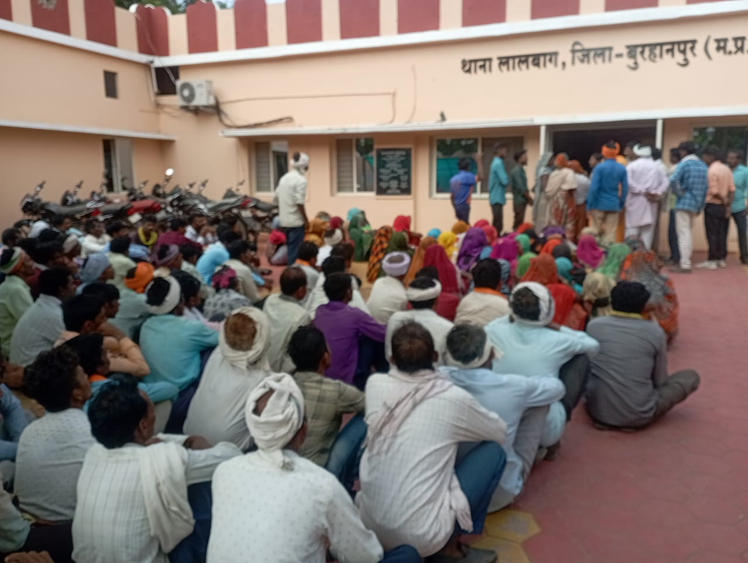
JADS members protestat Burhanpur’s Lal Bagh Police Station a day after Adivasi activist Nitin Varghese’s arrest.
Varghese immediately contacted the DFO and the district collector seeking their help in ensuring the safety of the detained villagers.
After speaking to district authorities, he informed the villagers about his conversation to assure them. But when villagers searching forthe detainees reached the Burhanpur forest range office, they heard their screams from a locked room. The villagers clashed with the forest personnel to free them. The police, inturn, arrested 35 Adivasis, including 15 women.
Subsequently, Varghese was under the police scanner.Referring to his conversation with the villagers on March 2, the police accused him of provoking the tribals to attack the ranger office and made him a co-accused in the FIR in May and arrested him.
Even in neighbouring Barwani district, the police lodged several FIRs against tribals associated with JADS and issued an externment notice to one activist Valsingh Saste.
Saste was accused of holding several rallies and protests against the non-payment of MGNREGA wages, sexual exploitation of migrant tribals and the pendency of applications filed under the FRA in the district and demanding a ban on liquor sale in tribal hamlets.
Pendency of FRA APPLICATIONS led to clash
The confrontation between the forest department and tribals IS due to the pendency of claims under FRA. While the department has alleged encroachment of its land by tribals, the latter say their applications under the FRA are pending.
The Burhanpur district also has a large backlog of FRA claims. In 2022, 8,546 claims were registered but only 4,527 (52%) were forwarded to the subdivisional committee. Of these, only 412 claims (9%) advanced to the district-level committee, the final stage before a claim seeking rights over a parcel of land is accepted or rejected.
Ultimately, only 376 claims were fully processed, a mere 4% of the total registered claims being rejected or accepted.
In Madhya Pradesh, 579,411 claims for land titles were filed in 2019, of which 354,787 (61%) were rejected.
In 2019, when the Supreme Court ordered the removal of illegal encroachers whose applications were rejected, the MP government, in an affidavit to the court, urged it to review the verification process and sought time.
On October 2, 2019, the then-chief minister Kamal Nath launched the Van Mitra App for digital verification but it got stalled in the lockdown.The BJP government kept it in cold storage.
According to data presented by the ministry of tribal affairs in Rajya Sabha on December 14, 2022, 54.55% of the total claims filed under the FRA till June 2022 in the state were also rejected.
